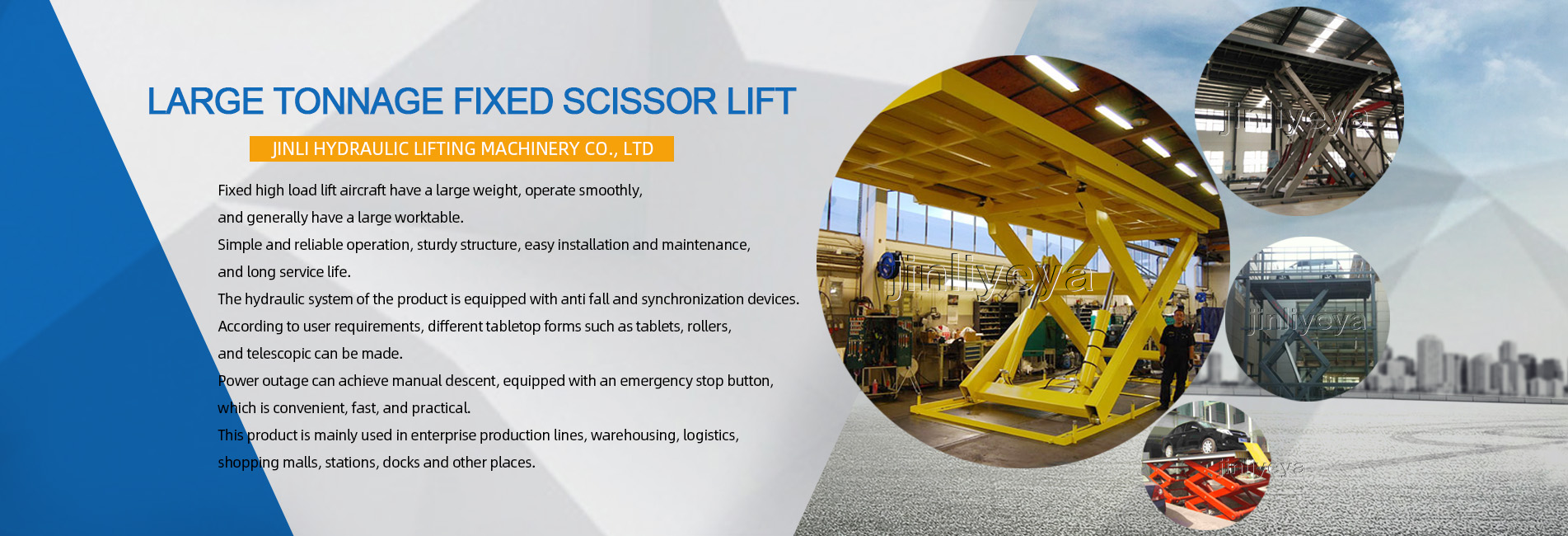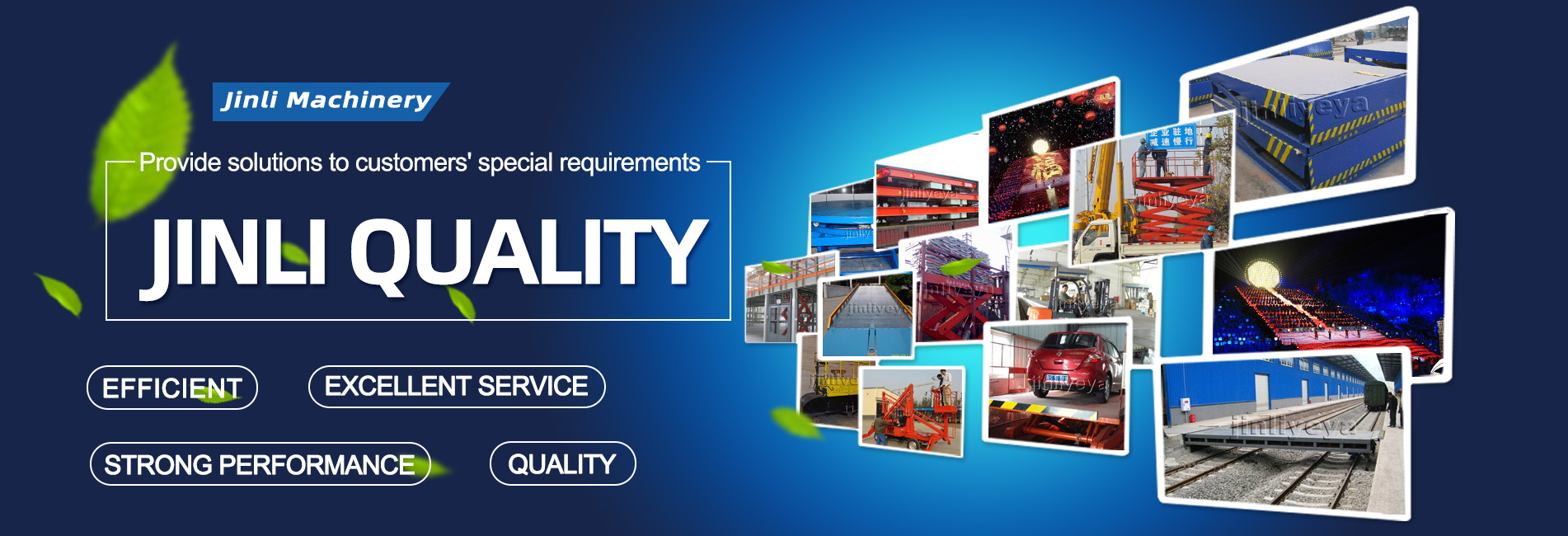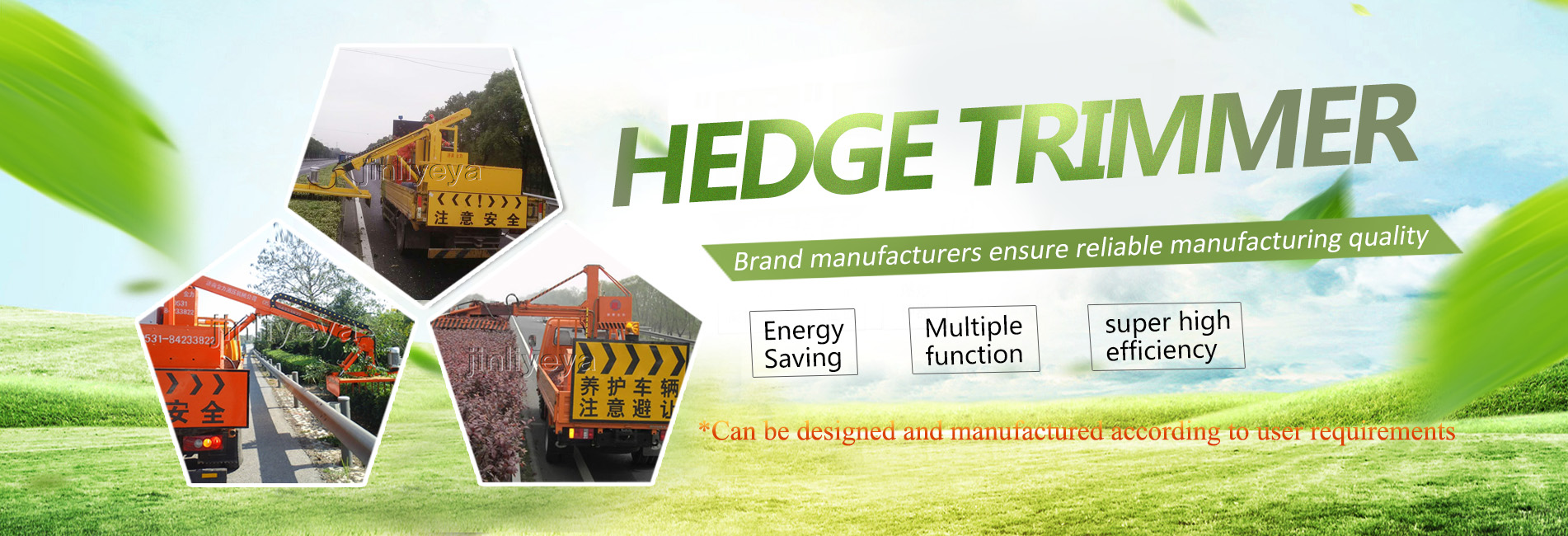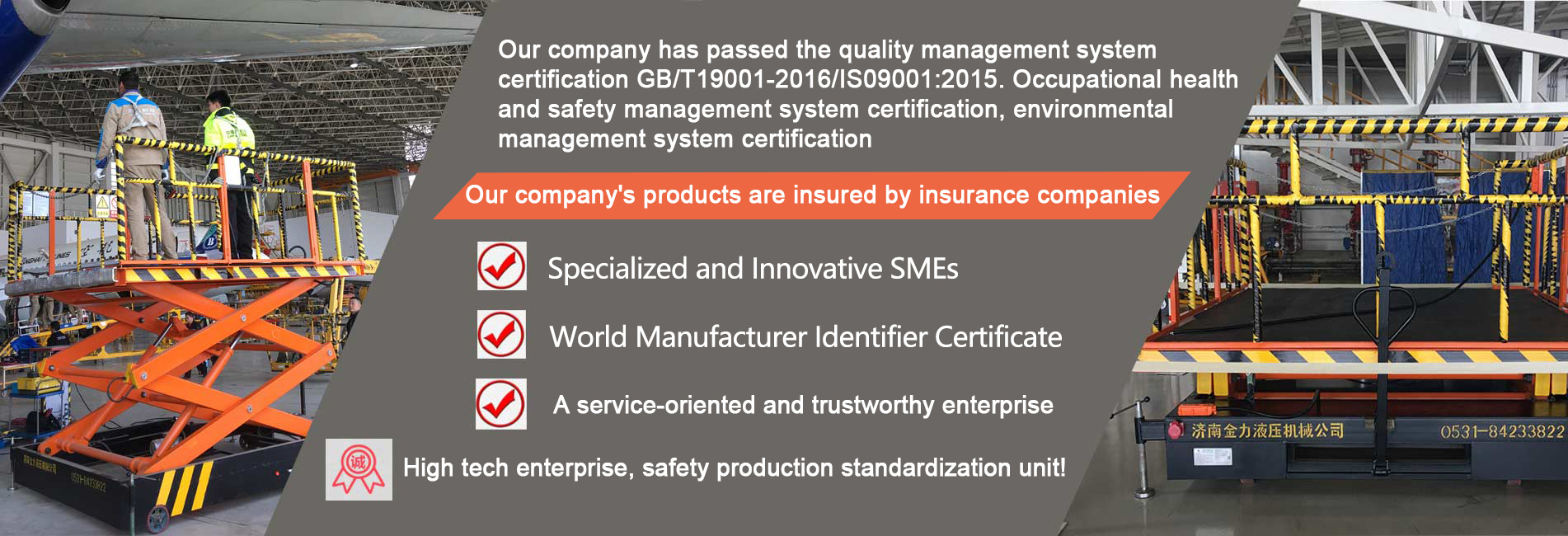summary
An elevator is a type of lifting equipment consisting of a walking mechanism, hydraulic mechanism, electric control mechanism, and support mechanism. Hydraulic oil is pressurized by a vane pump and enters the lower end of the hydraulic cylinder through an oil filter, explosion-proof electromagnetic directional valve, throttle valve, hydraulic control check valve, and balance valve, causing the piston of the hydraulic cylinder to move upward and lift heavy objects. The return oil from the upper end of the hydraulic cylinder returns to the oil tank through the explosion-proof electromagnetic directional valve, and its rated pressure is adjusted through an overflow valve. The reading value on the pressure gauge is observed.
1、 Working principle
Hydraulic lifting platform products are divided into curved arm hydraulic lifting platforms, scissor hydraulic lifting platforms, mast hydraulic lifting platforms, and straight arm hydraulic lifting platforms according to their working modes. The hydraulic lifting platform is a replacement product for folding arm lifts and scissor lifts. It can be widely used for decoration and renovation of stations, docks, airports, hotels, postal and telecommunications, municipal gardens, grain depots, cleaning companies, public building facades, or installation and maintenance of power systems, etc. This elevator has the advantages of light weight, self-propelled operation, electric starting, self-supporting legs, simple operation, large working surface, especially the ability to cross obstacles for high-altitude operations.
1. Hydraulic lifting platforms can be divided into four wheel mobile, two wheel traction, car modification, electric scooter, auxiliary self-propelled, and lifting heights ranging from 4 meters to 18 meters. This product series has a load capacity ranging from 0.1 to 0.8 tons, and can also be customized according to user requirements, with a load capacity of up to 10 tons.
2. Hydraulic lifting platforms are widely used for factory maintenance in industrial and mining enterprises, municipal construction, and decoration in hotels and guesthouses, with reliable quality and complete performance.
3. Users can choose the power mode and configuration according to their own usage range (f à n w é i):
① The power system includes: battery DC power supply, single-phase or three-phase power supply, and diesel engine.
② Walking: assisted self-propelled, two wheel traction, self driving, and car modified.
③ Support legs: mechanical support legs, hydraulic support legs, ordinary hand cranked support legs, and pull-out support legs.
④ Control System: Explosion proof Electronic Control System, Remote Control System, PIC Control System
⑤ Hydraulic pump station: domestic lifting platform dedicated pump station, Italian imported pump station
⑥ External protective devices: organ cover type, mesh type, iron plate sealed type.
3、 Purpose:
The hydraulic lifting platform is widely used in various industrial enterprises and production lines such as automobiles, containers, mold manufacturing, wood processing, chemical filling, etc., to meet the lifting needs of different working heights. At the same time, it can be equipped with various table forms and combined with various control methods. It has the characteristics of smooth and accurate lifting, frequent starting, and large load capacity, effectively solving various lifting difficulties in industrial enterprises and making production operations easy and flexible.
The hydraulic lifting platform mainly achieves the lifting function through the pressure transmission of hydraulic oil. Its scissor mechanical structure provides high stability for the lifting of the elevator. The wide working platform and high load-bearing capacity make the high-altitude operation range larger and suitable for multiple people to work at the same time. It makes high-altitude operations more efficient and safer.
{16}







